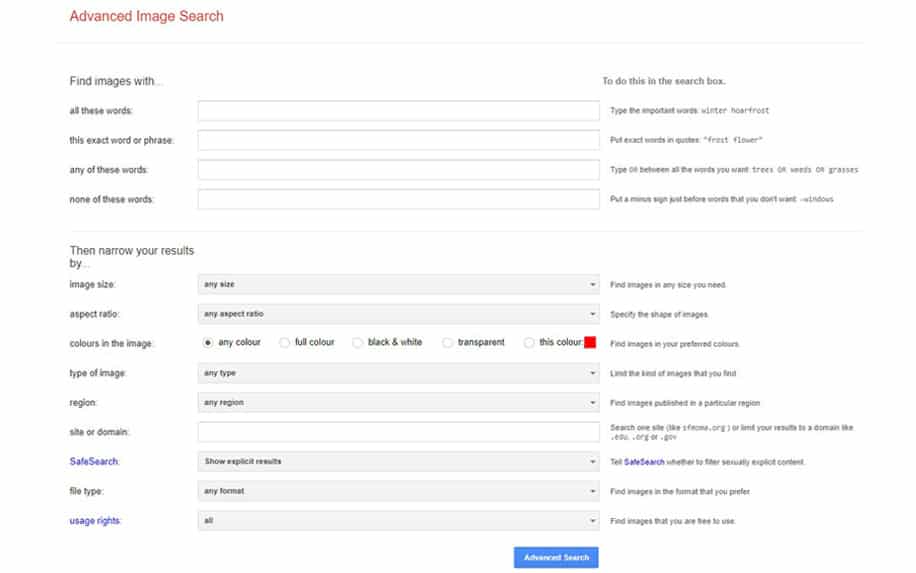
If you have an actual image you want removed, then now is a great time to use that image while following along. Now that I’ve covered the various removal tools from Google, I’m going to walk you through removing an image from Google Image Search.
GOOGLE IMAGE SEARCH ADVANCED SEARCH GONE HOW TO
How To Remove An Image From Google Images Using The Outdated Content Tool All three were denied by Google, but scary to think there was an attempt like that:

Scary, right? Of course, since the content was still present on the site, Google declined the removal request and nothing happened. But it’s still important to know what’s going on there.įor example, here is a screenshot showing three submitted requests flagging my client’s content as “explicit”. For example, I’ve seen people try to remove important files or directories from sites they don’t control using the tool. Note, I would check this report soon… since you might be surprised what you find there. The new Removals Tool in GSC will also show you “outdated content removal requests” (which were submitted via the public Outdated Content Tool I mentioned earlier! So as a site owner, you can see any content that someone has attempted to remove on your site using the public tool. And if the content is removed behind the scenes, it will remain out of Google’s index, and out of its search results long-term (beyond the six-month temporary removal).Īdding More Confusion To The Removal Tools Situation webpages or images) and you will also see previous requests and the status of those requests.Īgain, this is different from the Removals Tool in GSC, where you can temporarily hide content from the search results from sites you control for six months (while you actually remove the content on your site). In the tool, you can request new removals (e.g. You cannot simply log into the tool and start nuking content from another site when that content still exists. It’s also important to note that the content you are attempting to remove from the search results must have been removed already from the third-party site for this tool to work. And it’s important to understand that it’s different from the Removals tool in GSC. I have used this tool many times over the years when helping clients. It’s a publicly available tool that you can use to request removal of webpages or images ( as long as that content has actually been removed). The Removals Tools in GSC Versus The Outdated Content Toolįirst, I know many people aren’t familiar with Google’s Outdated Content Tool, which has been around for a long time. I’ll walk you through using the Outdated Content Tool to target those images and remove them from the image results. I’ll explain more about that soon.įor this post, I’m going to show you how to remove an image from Google Images, when that image resides on a third-party site (out of your control). On that note, I find there’s a lot of confusion about the various tools Google provides for removals, and how to use them.

Well, as long as the image has been removed from the third-party page that contained it, or if the page has been entirely removed from that site, Google provides functionality for quickly removing that image from the search results. And that can result in images hanging around the search results when they really should be removed, which can be extremely frustrating. From an image search standpoint, it can unfortunately lag behind web search for updating and/or removing files. For example, for times you can’t directly access the third-party site and you can’t access the Google Search Console (GSC) property for the site to use the Removals tool.

Since the sites aren’t under your direct control, your options are limited. For example, profile photos from Twitter, Facebook, images from articles that have been removed, etc.

And many times, the images that people want to remove are on third-party sites outside of that person’s control. I’ve received many calls over the years about this very situation. There are times that pesky image search results stick around on Google even when those images have been removed from the web (or at least you think they have been removed from the web).


 0 kommentar(er)
0 kommentar(er)
